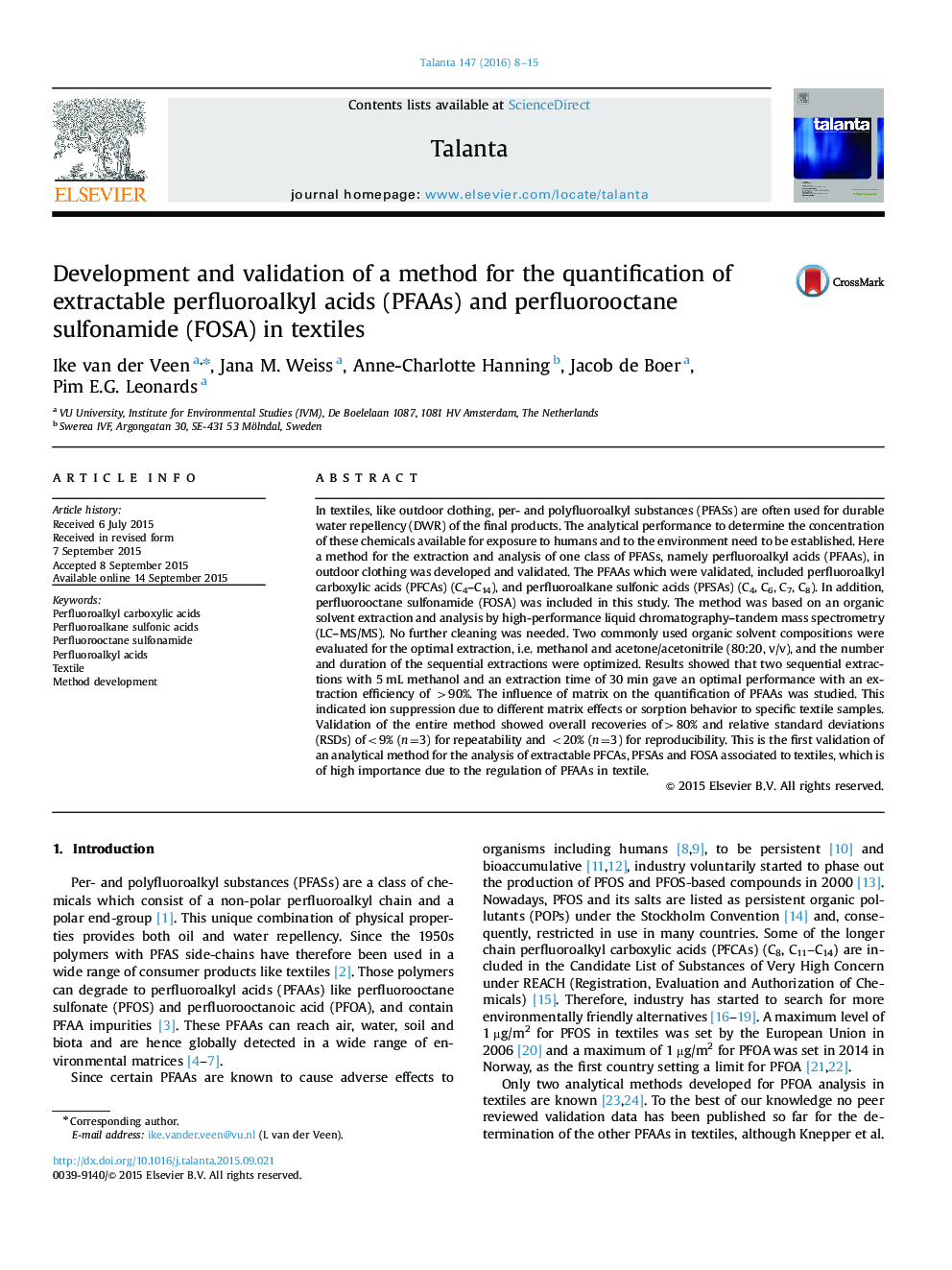| Article ID | Journal | Published Year | Pages | File Type |
|---|---|---|---|---|
| 1242718 | Talanta | 2016 | 8 Pages |
•Method development and validation for the determination of PFAAs and FOSA in textiles.•Methanol extraction gives satisfactory results for PFAA determination in textiles.•The method is able to detect PFOS and PFOA below the allowable levels in textiles.
In textiles, like outdoor clothing, per- and polyfluoroalkyl substances (PFASs) are often used for durable water repellency (DWR) of the final products. The analytical performance to determine the concentration of these chemicals available for exposure to humans and to the environment need to be established. Here a method for the extraction and analysis of one class of PFASs, namely perfluoroalkyl acids (PFAAs), in outdoor clothing was developed and validated. The PFAAs which were validated, included perfluoroalkyl carboxylic acids (PFCAs) (C4–C14), and perfluoroalkane sulfonic acids (PFSAs) (C4, C6, C7, C8). In addition, perfluorooctane sulfonamide (FOSA) was included in this study. The method was based on an organic solvent extraction and analysis by high-performance liquid chromatography–tandem mass spectrometry (LC–MS/MS). No further cleaning was needed. Two commonly used organic solvent compositions were evaluated for the optimal extraction, i.e. methanol and acetone/acetonitrile (80:20, v/v), and the number and duration of the sequential extractions were optimized. Results showed that two sequential extractions with 5 mL methanol and an extraction time of 30 min gave an optimal performance with an extraction efficiency of >90%. The influence of matrix on the quantification of PFAAs was studied. This indicated ion suppression due to different matrix effects or sorption behavior to specific textile samples. Validation of the entire method showed overall recoveries of>80% and relative standard deviations (RSDs) of<9% (n=3) for repeatability and <20% (n=3) for reproducibility. This is the first validation of an analytical method for the analysis of extractable PFCAs, PFSAs and FOSA associated to textiles, which is of high importance due to the regulation of PFAAs in textile.
Graphical abstractFigure optionsDownload full-size imageDownload as PowerPoint slide
